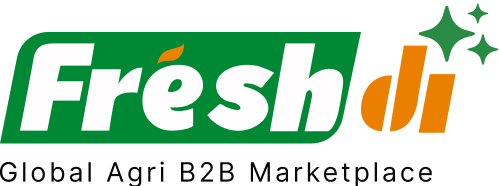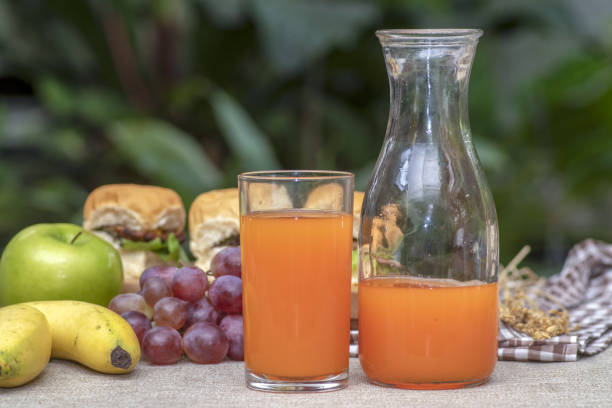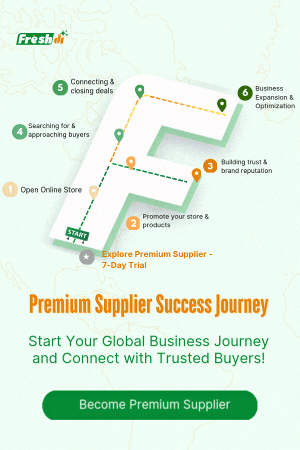Introduction – Brazil’s Juice Market by the Numbers
When you think of juice giants, Brazil easily tops the list—and for good reason. The country stands tall as the world’s leading producer and exporter of orange juice, commanding approximately 70% of global orange juice exports in the 2024/25 season. That’s not just dominance; it’s market-shaping power.
But here’s the twist—despite its leadership, Brazil faced a tough harvest. A combination of unfavorable weather and the spread of citrus greening disease slashed orange production by 24.36%, hitting the lowest levels in over 30 years. That’s like a heavyweight champion fighting with one hand tied.
From July to December 2024, Brazilian juice exporters shipped 430,078 metric tons, down 19.7% year-on-year. Yet, in an odd twist of market fate, revenue surged by 42.7%, totaling $1.88 billion. Why? Because lower supply pushed prices up, keeping demand hot and margins tighter than ever.
The juice market is clearly volatile—but also full of opportunity. That’s where platforms like Freshdi come in. With real-time market data, supplier verification, and RFQ trends, Freshdi helps buyers make data-backed decisions in a shifting landscape.
Deep Dive – Key Production, Export Statistics & Demand Insights
Let’s get into the juicy details. Brazil’s juice export game isn’t just about oranges—though they dominate. The country exports a wide range of juices, from concentrates to not-from-concentrate (NFC) varieties, catering to global tastes.
Despite a production drop in 2024/25, Brazil remains a top supplier to key markets like the U.S., the EU, and Asia. According to industry data, the U.S. accounted for 41.7% of Brazil’s orange juice exports. That heavy reliance became a risk when the U.S. imposed a 50% tariff on Brazilian imports starting August 1, 2025.
This policy shift could reshape trade flows. But that’s not all—platforms like Freshdi report a noticeable uptick in RFQs (Requests for Quotation) for alternative juice sources, reflecting buyer hesitation and supply chain reevaluation.
Buyers are increasingly using Freshdi’s RFQ trends to track market interest and spot emerging opportunities, such as diversifying suppliers or shifting to premium juice variants in response to global pricing changes.
Top 4 Verified Juice Suppliers in Brazil – Leading Exporters by Volume
If you’re looking to source juice from Brazil, these are the top-performing suppliers you should keep your eye on. They’ve been selected based on verified export volumes, certifications, global reach, and buyer feedback on Freshdi.
1. DISTILLERIE STOCK DO BRASIL LTDA
This supplier is a major player when it comes to fruit-flavored concentrates and syrups. Known for its innovation and consistency, it serves both local and international markets with a wide range of juice products. Buyers on Freshdi rave about their quality control and timely shipments.
2. Rsa International Business
RSA is a versatile exporter dealing in a variety of natural and processed food products, including juices. Their agility and responsiveness make them a favorite among medium-sized importers. They’ve built a strong reputation on Freshdi for being reliable and transparent.
3. SOCIEDADE DE BEBIDAS PANIZZON LTDA.
This one is a legacy brand with decades of experience. Their juice line stands out for its authentic flavors and sustainable sourcing. Panizzon’s products are especially popular in the European and South American markets, and they hold several international certifications.
4. Ricus Comercio Impor Export Produtos Alimenticios Naturais Ltd.
Ricus focuses on natural and organic juice products, tapping into the growing global demand for clean-label beverages. Their niche appeal and commitment to sustainability make them a rising star on Freshdi, especially among health-focused retailers.
Dynamic Ranking Note:
Keep in mind that rankings on Freshdi are dynamic and updated regularly. Their features like “Supplier of the Month” or “Quarterly Export Leaders” spotlight rising performers based on recent trade activity and buyer feedback.
Market Navigation – Statistical Trends, Price Insights & Export Dynamics
Navigating Brazil’s juice market is like steering through a tropical storm—it’s full of surprises, but you’ll get rewards if you know where to look.
What’s Hot Right Now?
- Orange juice remains the leader by a mile, but there’s growing demand for mango, passionfruit, and açai juices.
- NFC (Not From Concentrate) juices are trending in premium health markets, especially in North America and Europe.
- According to Freshdi’s RFQ data, there’s been a 30% increase in demand for organic juice suppliers in Q2 2025 alone.
Seasonal Pricing Trends
Juice prices aren’t static—they swing with the seasons. During peak harvest (usually May–July), prices dip slightly due to higher availability. But if weather or disease strikes, expect prices to spike, as seen in 2024/25.
Freshdi’s trade data shows that buyers who lock in long-term contracts during mid-season enjoy more price stability. The platform also offers price forecasting tools based on historical and real-time data, helping buyers time their purchases wisely.
Export Dynamics
With the new U.S. tariffs, some suppliers are shifting focus to Europe and Asia, where demand remains strong and trade policies are more favorable. This pivot could create new opportunities for importers in those regions.
Freshdi’s export flow maps help visualize these changes, offering insights into which markets are heating up and where supply may tighten.
Conclusion – Leveraging Data for Informed Procurement
Brazil may be facing a tough juice season, but make no mistake—it still sets the tone for the global juice market. Even with falling production and rising tariffs, Brazil’s juice exports brought in $1.88 billion, proving the resilience and value of its juice sector.
Whether you’re a bulk importer or a niche brand scout, choosing the right supplier is key. And that means going beyond just price—look at export volumes, certifications, buyer reviews, and market adaptability.
Platforms like Freshdi are empowering buyers with the tools to make those smart choices. From RFQ trends to supplier performance analytics, Freshdi turns raw data into actionable insights, helping you build a reliable, cost-efficient, and resilient juice supply chain.
Key Takeaways
- Brazil controls 70% of global orange juice exports, despite recent production challenges.
- Export revenues are up due to high international prices, even as volumes decline.
- The U.S. tariff shakeup is prompting suppliers to explore new markets.
- Verified suppliers like DISTILLERIE STOCK and PANIZZON are leading the export game.
- Platforms like Freshdi offer real-time insights, helping buyers adapt to market changes.
Checklist for Buyers – 2025 Juice Procurement
✅ Check supplier export volumes and certifications on Freshdi
✅ Evaluate RFQ trends for demand signals
✅ Monitor seasonal pricing patterns
✅ Diversify supplier base to manage tariff risks
✅ Use Freshdi’s supplier verification to avoid fraud or delays
Future Outlook – The Road Ahead for Brazilian Juice
The next few years will be pivotal for Brazil’s juice industry. As climate challenges persist and trade policies shift, data-driven procurement will become a non-negotiable strategy.
Expect to see a surge in sustainable and organic juice exports, and possibly new trade alliances beyond the U.S. Buyers who stay agile and informed will thrive.
With platforms like Freshdi, you’re not just buying juice—you’re investing in supply chain intelligence that keeps your business ahead of the curve.
FAQs
1. Why is Brazil such a big player in the juice market?
Brazil’s climate, massive citrus plantations, and advanced processing infrastructure make it ideal for large-scale juice production—especially orange juice.
2. How have the new U.S. tariffs affected Brazilian juice exports?
The 50% tariff, effective August 2025, has made it costlier to export to the U.S., pushing suppliers to diversify their markets and adjust pricing strategies.
3. What types of juices are trending globally in 2025?
Besides orange juice, there’s rising demand for mango, passionfruit, açai, and organic NFC juices, especially in health-conscious markets.
4. How can I verify a juice supplier in Brazil?
Use platforms like Freshdi to access verified supplier profiles, buyer reviews, certifications, and export histories.
5. When is the best time to buy Brazilian juice for better pricing?
Mid-harvest season (May–July) is typically best for pricing, but always watch global trends and use forecasting tools on Freshdi to optimize timing.
References
- Brazil orange juice exports volume falls 20% from July to December
- Brazil’s orange output to hit over 30-year low on disease, weather
- How a 50% US tariff rate could affect Brazilian exports
- Freshdi – Global Supplier Marketplace


